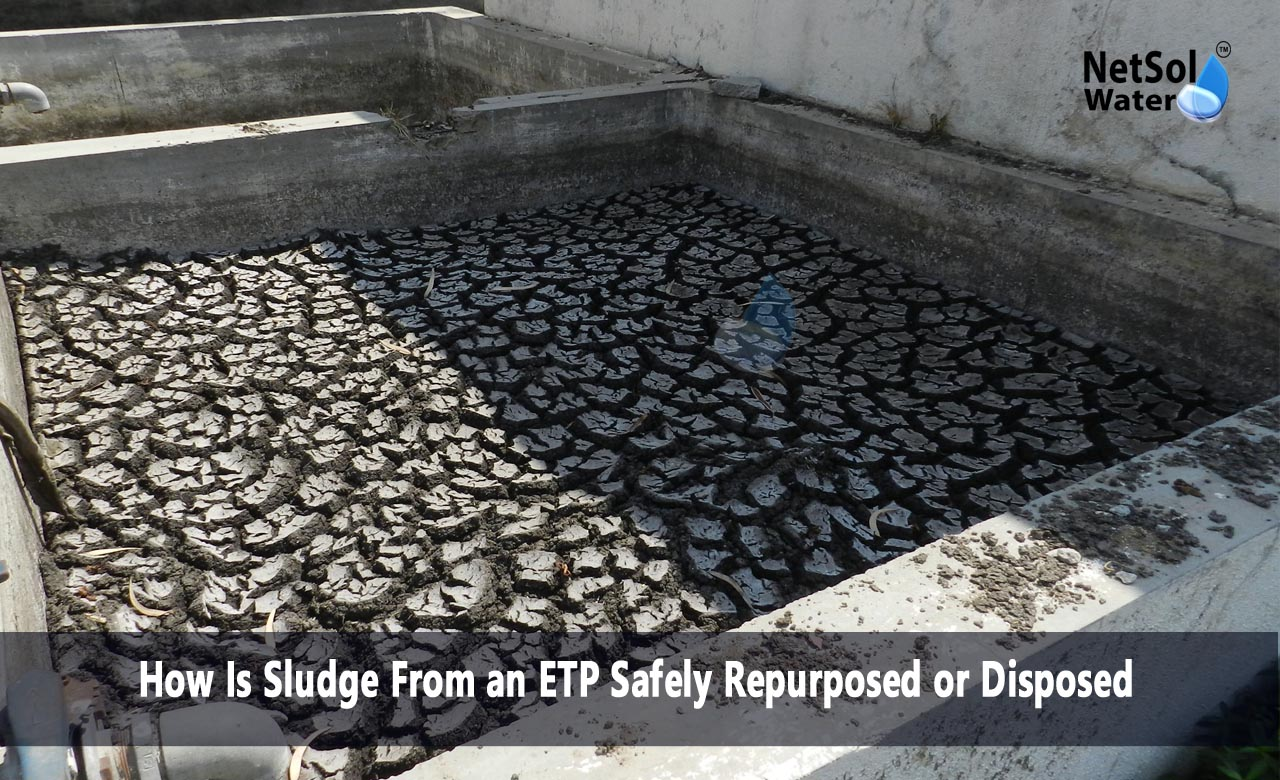How Is Sludge From an ETP Safely Repurposed or Disposed?
Effluent Treatment Plants have a central role in the processing of industry wastewater before its return to nature. A by-product of the process is sludge, a semi-solid thick material bearing contaminants that have been extracted from wastewater during treatment. Management of this sludge is a top environmental and operational concern. Being aware of how sludge from an ETP safely repurposed or disposed safely is essential to public health protection, the environment, and regulatory compliance, the following blog talks about the general ways and best practices to treat ETP sludge safely and environmentally.
What Is Sludge in an ETP?
Wastewater treatment causes suspended solids, organic matter and other things to be collected as sludge. When water, microbes, heavy metals and chemicals are present together, the material can be dangerous unless handled properly.
Improper management of sludge allows waste to spread, polluting the earth, polluting water, creating smells and risking health. For this reason, wastewater plants and industrial sites use set rules to handle sludge from an ETP is repurposed or disposed.
Read: Effluent Treatment Plant Manufacturer
General Methods to Dispose of Sludge From an ETP Safely
There are different treatment methods available for reuse or sludge disposal depending on its nature and local environmental regulations. They try to reduce its volume, remove toxic substances, and convert it into something useful or harmless.
Thickening and Dewatering
Sludge thickening and dewatering are usually carried out before reusing or disposing of it to reduce water content. It makes handling easier and cheaper, as well as cheaper transportation and disposal.
· Thickening utilizes gravity or mechanical equipment to thicken the sludge
· Dewatering removes surplus water by using centrifuges, belt presses, or filter presses.
· Dewatered sludge is much lower in volume and higher in solid content, and it is now ready for the following treatment or disposal.
Sludge Stabilization
Stabilization reduces sludge's harmful pathogens and odors. Common stabilization methods are:
· Aerobic digestion, in which bacteria break down organic material in the presence of oxygen.
· Anaerobic digestion, in which bacteria function without oxygen and produce biogas that can be used as power.
· Lime stabilization, in which quicklime is added to raise the pH and kill pathogens.
Stabilized sludge is more manageable and can be reused or disposed of after further treatment.
Safe Repurposing of Sludge
Repurposing sludge in a safe and beneficial way is one of the best practices of sludge management. Some of the common ways of repurposing sludge are:
· Land Use as Fertilizer: Sludge that has been treated or, more broadly known, as biosolids can be applied as a fertilizer to land used in farming to increase soil fertility and nutrients. Strict measures are taken with it to ensure that no toxin enters the food chain.
· Composting: Sludge is mixed with organic waste and composted into nutrient-rich soil conditioners used for gardening and landscapings.
· Energy Recovery: Anaerobic digestion can make biogas produced from sludge usable as a renewable form of energy, reducing waste and power consumption.
When sludge from an ETP is safely repurposed or disposed, it enhances sustainability by reducing landfill usage and recycling valuable materials.
Safe Disposal Means
Where repurposing is not feasible or where sludge is highly contaminated, safe disposal is critical. Disposal methods are:
· Landfilling: Sludge may be put in specially designed landfills with liners and leachate collection systems in order to prevent environmental contamination.
· Incineration: Sludge bulk is reduced by high-temperature incineration, and toxic chemicals and microbes are destroyed. The ash sometimes is disposed of safely or even utilized in building materials.
Both disposal methods must adhere to environmental standards in order to minimize the effect on air, soil, and water.
Monitoring and Compliance
Efficacious treatment and disposal monitoring of sludge is essential. Facilities must continuously test sludge for contaminants, pathogens, and heavy metals to ascertain the proper management practice. Keeping national and local environmental laws intact ensures no harm to the environment or public health when handling sludge.
Why Is Proper Sludge Management Important?
Poor handling of ETP sludge may cause serious environmental problems such as contamination of groundwater, spread of diseases, and air pollution. Safe reuse or disposal, on the other hand, helps to:
· Preserve ecosystems and natural water resources.
· Improve soil quality when used as fertilizer.
· Generate renewable energy in the form of biogas.
· Reduce landfill waste and reduce environmental footprint.
· Adherence to safety and legislative requirements.
Thus, it is most important that industries and treatment plants incur expenses on proper sludge management technology and training.
Conclusion
Managing sludge from an ETP safely repurposed or disposed is a significant component in wastewater treatment that cannot be overlooked. Either through thickening, stabilization, reuse as fertilizer or energy, or safe disposal, every operation should comply with environmental safety standards. Safe handling of sludge not only prevents pollution and health hazards but also enables sustainable use of resources and energy recovery.
By using advanced sludge management practices and adhering to regulation, industries can turn this waste commodity into a benefit, not an environmental risk.
Do you need an advice or assistance on selecting the best water and waste water treatment unit? We have solutions for all your problems!
Let us know your problem, our experts will make sure that it goes away.
For an assistance or related query,
Call on +91-9650608473 Or write us at enquiry@netsolwater.com



